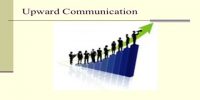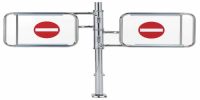The main characteristics of directing are discussed below:
Directing is said to be a procedure in which the managers train, guide and oversee the recital of the workers to achieve predetermined goals. Directing is said to be the heart of the management process. Planning, organizing, staffing have got no importance if direction function does not take place.
- Directing initiates action
Directing is a key managerial function. A directing function is performed by the managers along with development, recruitment, organizing and controlling in order to release their duties in the organization. A manager has to perform this function along with planning, organizing, staffing and controlling while discharging his duties in the organization. By giving directions or instructions the managers get the work in progress in the organization. While other functions organize a proposal for action, directing initiates action.
- Directing takes place at every level of management
Every manager, from the top executive to supervisor performs the function of directing. Directing is a persistent function as it is performed by managers at all levels and in all locations. Directing flows from a top level of administration to the base level. The directing takes place wherever superior-subordinate relations exist. Every manager has to administer, direct, inspire and communicate with his subordinate to get things done. Every manager exercises this function on his instantaneous subordinate. However, the time spent in directing is moderately more at the operational level of management.
- Directing is a continuous process
Directing is a continuous activity. Directing is a constant procedure. A manager cannot just rest after issuing orders and instructions. It takes place throughout the life of the organization irrespective of people occupying managerial positions. It is a continuous function as it continues all over the life of organization irrespective of the changes in the managers or employees. He must constantly take steps to make sure that orders and instructions are conceded out accurately.
- Directing flows from top to bottom
Directions are given by managers to their subordinates. Directing is first initiated at the top level and flows to the bottom through the organizational hierarchy. Every manager can direct his instant subordinate and take directions from the direct boss. It means that every manager can direct his immediate subordinate and take instructions from his immediate boss. Directing starts from top level and flows to the lower level.
- Performance Oriented:
Directing is a performance-oriented function. The major reason for directing is bringing competence in performance. Directing converts plans into performance. Performance is the spirit of directing. Directing functions direct the performance of individuals towards the attainment of managerial ambition.
- Human Element:
Since all employees are dissimilar and perform differently in dissimilar situations, it becomes significant for the managers to undertake the situations properly. The directing function involves revise and molding of human behavior. Thus, directing is an important function that gets the work done by the employees and increases the enlargement of the organization. It motivates employees to work with their best capability.
- Pervasive Function
Directing takes place at each level of the organization. Wherever there is a superior-subordinate relationship, directing exists as every manager provides leadership and motivation to his subordinates.













